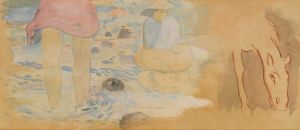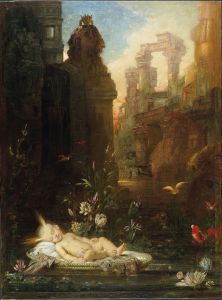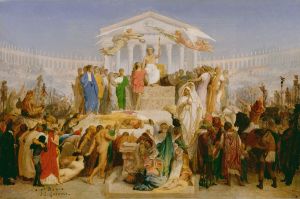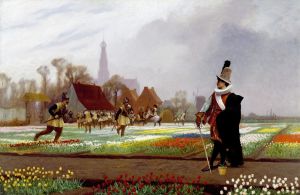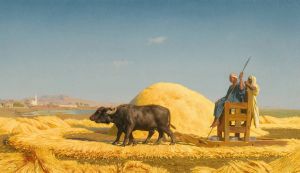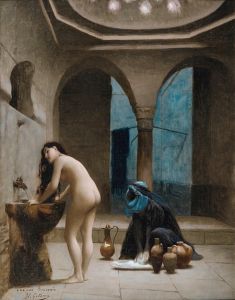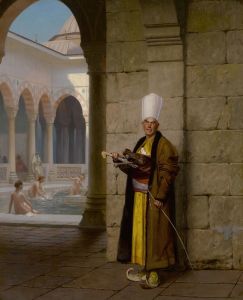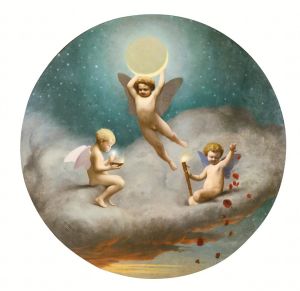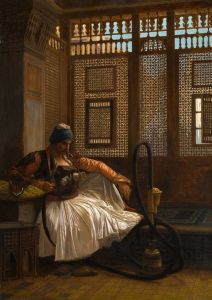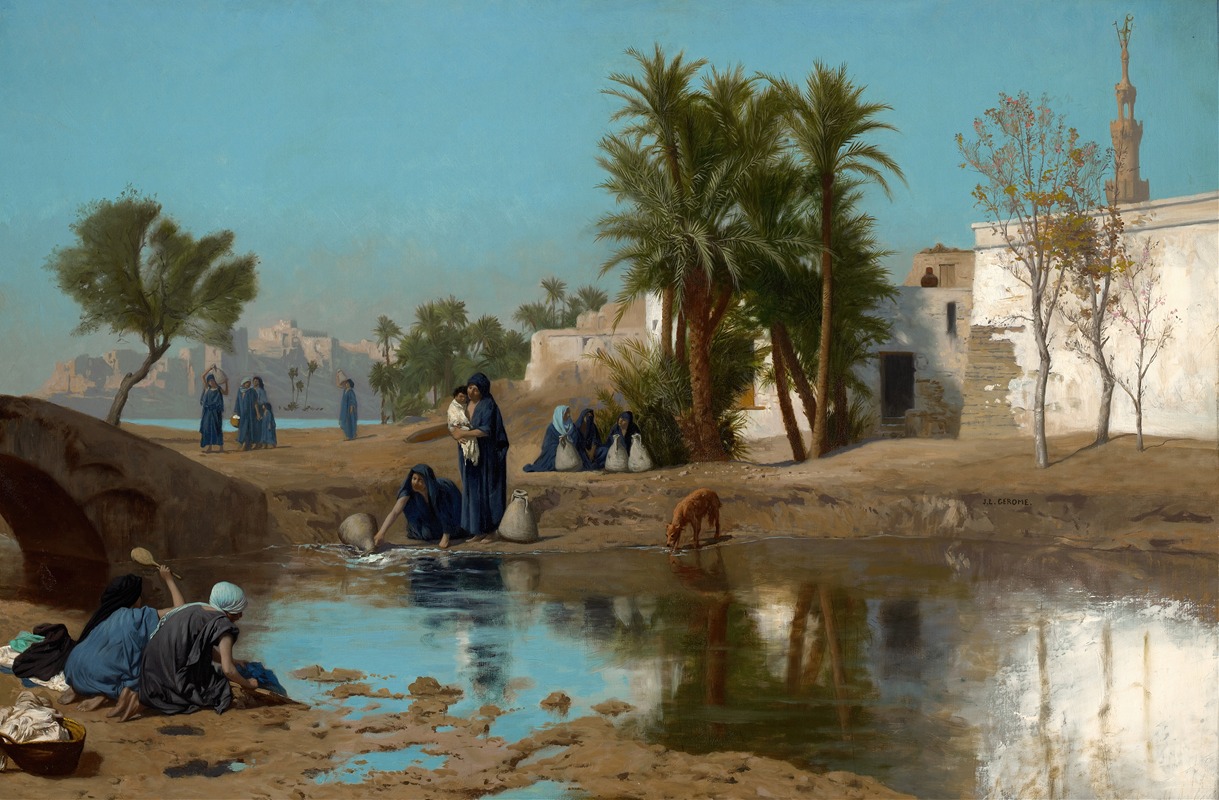
Fellah Women Drawing Water
A hand-painted replica of Jean-Léon Gérôme’s masterpiece Fellah Women Drawing Water, meticulously crafted by professional artists to capture the true essence of the original. Each piece is created with museum-quality canvas and rare mineral pigments, carefully painted by experienced artists with delicate brushstrokes and rich, layered colors to perfectly recreate the texture of the original artwork. Unlike machine-printed reproductions, this hand-painted version brings the painting to life, infused with the artist’s emotions and skill in every stroke. Whether for personal collection or home decoration, it instantly elevates the artistic atmosphere of any space.
Jean-Léon Gérôme's painting Fellah Women Drawing Water is a work by the renowned 19th-century French academic painter and sculptor Jean-Léon Gérôme. Gérôme is widely recognized for his detailed and highly polished works that often depict historical, Orientalist, and classical themes. This painting is an example of Gérôme's interest in Orientalism, a genre that sought to portray the cultures, landscapes, and peoples of the Middle East and North Africa as imagined by European artists of the time.
The title of the painting, Fellah Women Drawing Water, refers to "fellah," an Arabic term used to describe peasant farmers or rural laborers in Egypt and other parts of the Arab world. The scene likely depicts women engaged in the everyday task of collecting water, a vital and routine activity in agrarian societies. Gérôme's work often sought to capture such moments of daily life with meticulous attention to detail, reflecting his academic training and his travels to the Middle East, which deeply influenced his art.
The painting exemplifies Gérôme's characteristic style, which combines precise draftsmanship with a focus on light, texture, and realism. His works are often noted for their ethnographic detail, though they have also been critiqued for perpetuating stereotypical and romanticized views of the "Orient." Gérôme's depictions of Middle Eastern and North African life were shaped by his travels to the region, including visits to Egypt, Turkey, and Syria, where he gathered inspiration for many of his paintings.
While specific details about the creation date or the current location of Fellah Women Drawing Water are not readily available, Gérôme's broader body of work is well-documented. His paintings were highly sought after during his lifetime, and he was a prominent figure in the academic art world of 19th-century France. Gérôme's works, including his Orientalist paintings, continue to be studied and exhibited in major museums and collections worldwide.
As with many Orientalist works, Fellah Women Drawing Water should be understood within the context of its time, reflecting both the fascination and the misconceptions that European artists and audiences held about the cultures they sought to depict. Gérôme's legacy remains a subject of both admiration for his technical skill and critical examination for the cultural narratives his works helped to shape.





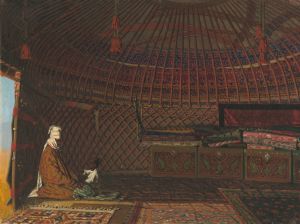
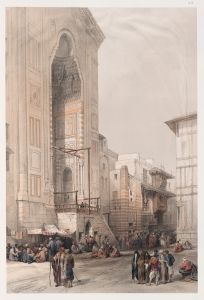
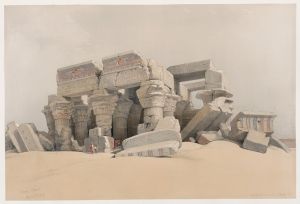
![Medinet Abou [Medinet Habu], Thebes. Dec. 5th, 1832.](/imgs/217510/s/david-roberts-medinet-abou-medinet-habu-thebes-dec-5th-1832-9c2109da.jpg)
![Temple at Wady Dabod [Wadi Dâbûd], Nubia.](/imgs/217543/s/david-roberts-temple-at-wady-dabod-wadi-dabud-nubia-14fd5f6c.jpg)
